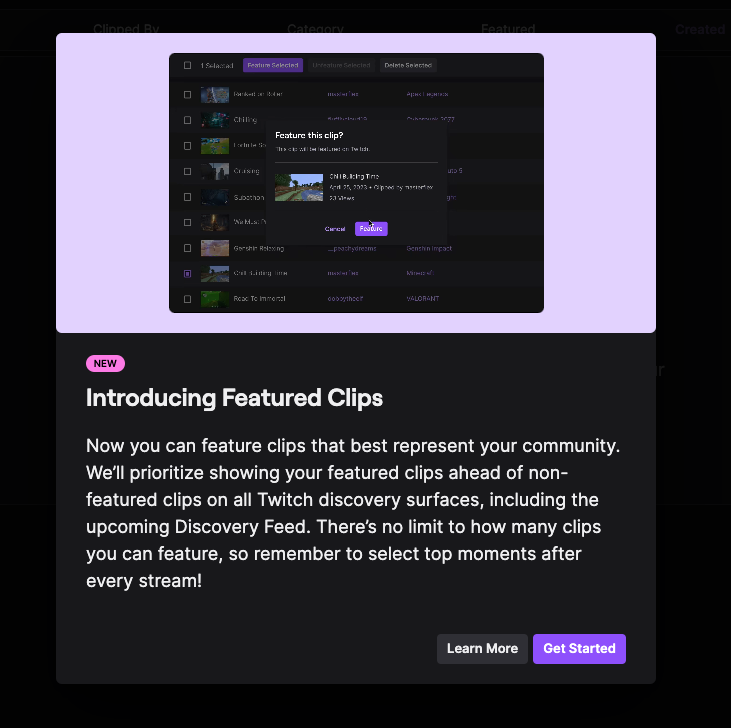Twitch’s previously-announced Discovery Feed is now out in the wild as a live test following the feature’s announcement back in July. The new feed will surface short clips from streams in a TikTok-like area within the Twitch app, giving offline creators a way to connect with new viewers without staying live for hours on end.
The test is available now as a “limited experience,” so only a subset of Twitch’s base will be trying it out. The company says it will use the test period to train its algorithm and collect user feedback before a full release of Discovery Feed this fall.

Twitch creators can now select clips to be mixed into the new discovery feed and other “discovery surfaces” i.e. new corners of the site designed to funnel new viewers to channels they might like. Twitch will also throw some regular clips into the feed, but says that it will prioritize clips that a streamer chooses to feature (there’s no upward limit to how many you can choose) and eventually only use featured clips to maximize creator control.
The Discovery Feed will join Twitch’s own take on a Stories feature, which is set to debut in October. The platform also recently added a tool that quickly exports vertical video for social sharing on apps like TikTok. (The new clips feed features horizontal video for now but Twitch says more vertical videos will appear “as the feed evolves.”)
Twitch creators have long called on the company to build more features that help them build a following and reach new audiences. Unlike on a fully algorithmic platform like TikTok, Twitch streamers have relatively few ways to attract new followers and subscribers.
Without a robust system for discovery akin to TikTok’s For You Page or YouTube’s recommendation engine, small and medium Twitch streamers often struggle to grow an audience without relying heavily on cross-platform promotion. The platform’s grind for building a regular viewership is infamous, and that isn’t even counting how difficult it is to earn meaningful income on the livestreaming platform.
The more time Twitch streamers spend streaming, the better for Twitch, but the company ultimately knows that creator burnout and mental health are issues that could jeopardize the long-term health of the platform. While other social media sites encourage endless engagement and frequent posting, little compares to the demands of Twitch, where streamers regularly spend consecutive hours live each day in order to build and maintain a following.
Twitch’s categories, which sort individual streamers by game and content type (Baldur’s Gate 3, Just Chatting, Music etc.), and its more recent addition of tags invite users to find new streamers, but they only aggregate anyone who is live at the time. That system incentivizes streamers to spend more time live to maximize their discovery chances and offers few avenues for offline streamers to connect with people who might enjoy their streams.
“Because Twitch is all about live, interactive channels, it’s not our goal for viewers to spend hours in a Clips feed,” the company wrote in a blog post with the Discovery Feed announcement. “Our investment in Clips is to help viewers discover your channel so they join you and your community when you stream.”
source https://techcrunch.com/2023/08/22/twitch-disccovery-feed-test/
 for details
for details 
Comments
Post a Comment